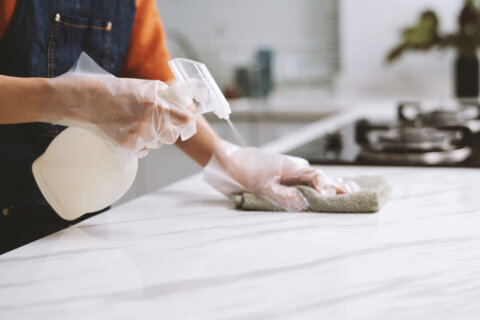WASHINGTON — There’s nothing better on a hot day than jumping into a swimming pool to cool off. And it’s great exercise!
We know that swimming is good for your heart, but Sally Squires, who writes the Lean Plate Club™ blog, also likes swimming because it’s a low-impact activity and easier on your joints.
Squires also points out that, since the water cools you continuously, you’re less likely to get overheated. And water provides natural resistance, so you’re getting about 12 to 14 percent more resistance to your muscles than you would if you did the same activity on land.
Swimming improves muscle flexibility and strength, builds endurance and helps with balance. There’s a lot of evidence that it improves osteoarthritis. And it’s a great place for pregnant women to exercise and for anyone recovering from injuries.
Sally point to all the different things you can do in a pool besides laps. She assured, “If you can dream it, you can do it in the pool!”
For instance: water walking, water yoga and water relaxation, deep water running, underwater cycling (with a bike in the water), water aerobics, wall exercises, water weight lifting, underwater treadmills, even kick boxing in the pool. You can do all these activities, even if you’re not a great swimmer. Buoyancy belts or life jackets can help keep you from going under.
Squires says that if you think swimming laps is boring, try an underwater iPod, which allows you to listen to music or books while you swim.
Swimming offers a serious bang for your buck in calorie-burning. Depending on your weight and your speed, you can burn 400 to 600 calories an hour. Going slowly, you’ll burn calories about equivalent to a brisk walk. At a medium pace of one and a half laps of a standard swimming pool per minute, your swimming calorie burn will be around the level of a medium-intensity aerobics class. Swimming faster, at more than two laps per minute, can burn calories at around the same rate as a slow run.
Just be sure to stay safe around the pool. Squires suggests:
- Go to a pool with a lifeguard;
- never swim alone;
- wear rubber-soled footwear near the pool;
- use swim goggles to protect your eyes from irritation and ear plugs as needed to protect your ears;
- and if you’re swimming outdoors, be sure to use water resistant sunscreen or wear protective SPF-rated clothing.
Also, joining a pool can be expensive, but the Washington area offers a lot of free or low-cost options, such as the YMCA, local schools and universities.







